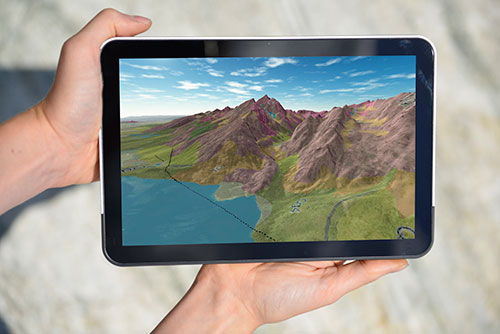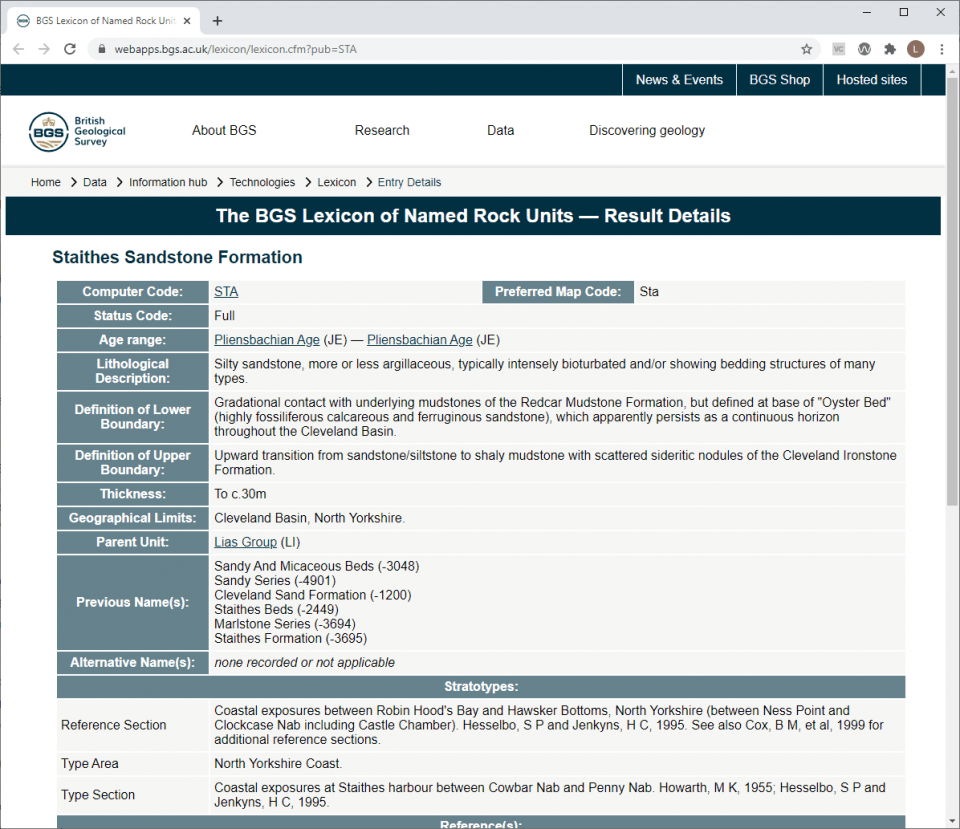The BGS Lexicon of Named Rock Units provides our definitions of the lithostratigraphic, lithodemic and lithomorphogenetic geological units of the UK and its continental shelf.
Lexicon entries
The lexicon focuses mainly on geological units of member, formation and group rank (and equivalent) but it also includes information on some units of lesser rank, notably economically important coal seams and laterally extensive marine bands. It includes superficial and bedrock units, plus synonyms and other names that are not currently recognised by the BGS or regarded as obsolete.
You can search on full or partial names of geological units.
Full entry
A full lexicon entry includes:
- geological unit name
- a persistent unique identifier (the lexicon ‘computer code’)
- preferred map code
- current status of the name
- rank
- parent unit
- geological age
- lithology
- definitions of boundaries
- thickness
- previous and alternative names
- geographical extent
- type localities
- reference list
Limitations
The lexicon is a dynamic database where new entries are added and existing entries are revised, upgraded and reclassified.
The information held is a current BGS interpretation. Free access is provided on the basis that the data is ‘as seen’ and subject to revision without notice.
Search the BGS Lexicon of Named Rock Units
Glossary
Bedrock deposits: rocks that are older than Quaternary age and generally lithified, which underlie the superficial deposits.
Lithomorphogenetic units: geological units that are defined by their shape and mode of origin. They are generally superficial and unnamed, for example unnamed raised beach deposits, glacial moraines or river terrace deposits.
Lithodemic units: geological units that do not obey the law of superposition, for example igneous intrusions and ancient, highly deformed and metamorphosed terranes.
Lithostratigraphic units: geological units that obey the law of superposition, i.e. they were deposited in layers with the oldest at the base and the youngest at the top, for example sedimentary rocks and lava flows.
Superficial deposits: deposits of Quaternary age and generally unlithified, which overlie the bedrock.
Citation
Please cite the lexicon as follows:
British Geological Survey. 2020. The BGS Lexicon of Named Rock Units [online]. Keyworth, Nottingham. Available from https://www.bgs.ac.uk/technologies/the-bgs-lexicon-of-named-rock-units/.
You may also be interested in

Technologies
Applications, software and online services created by the BGS and our collaborators.




